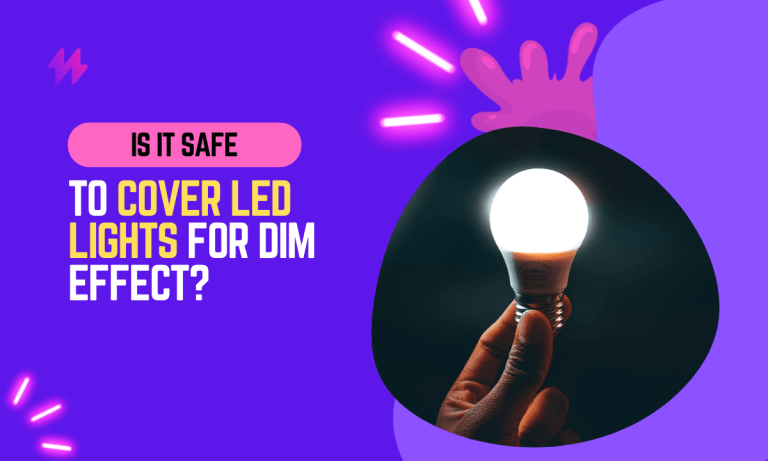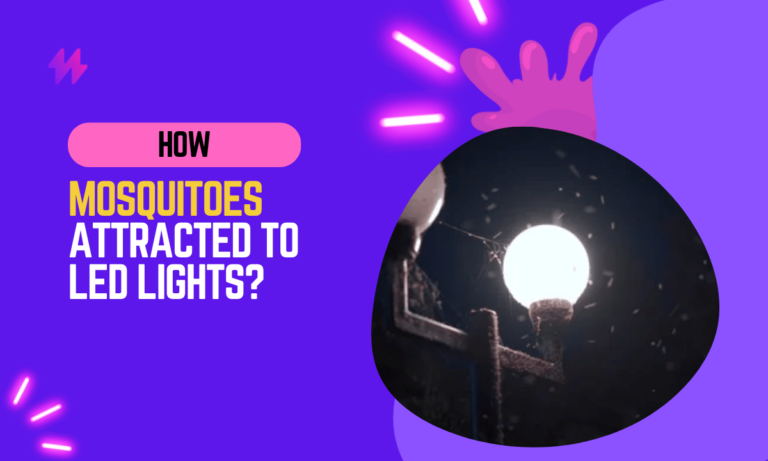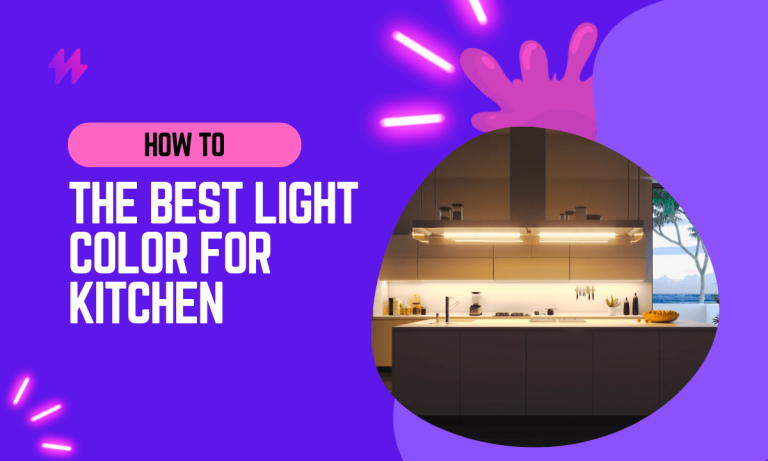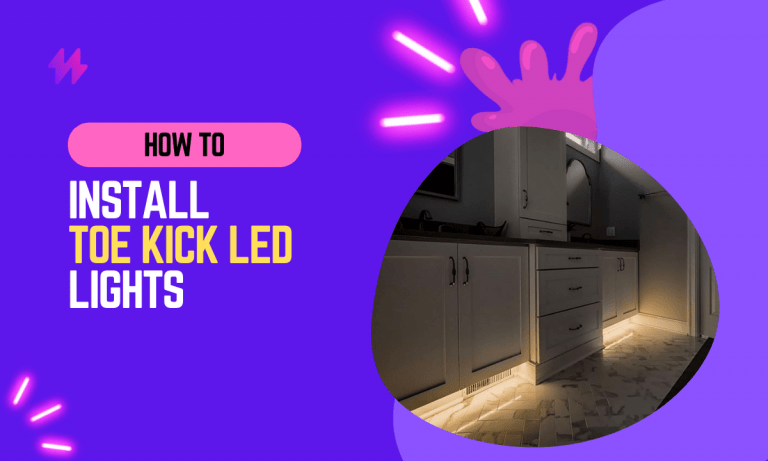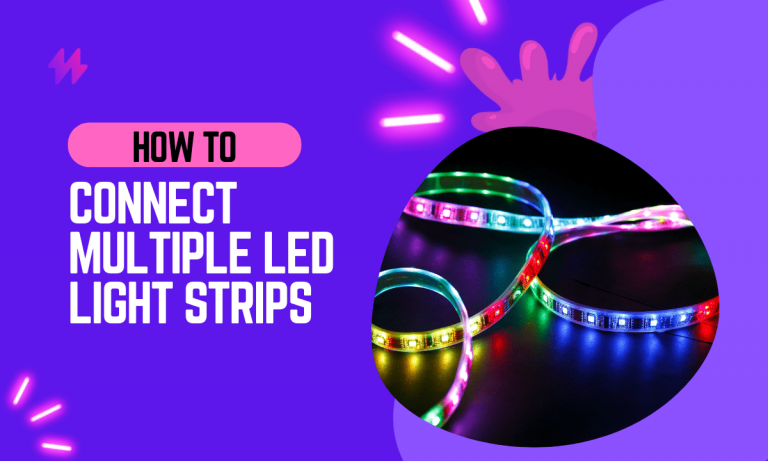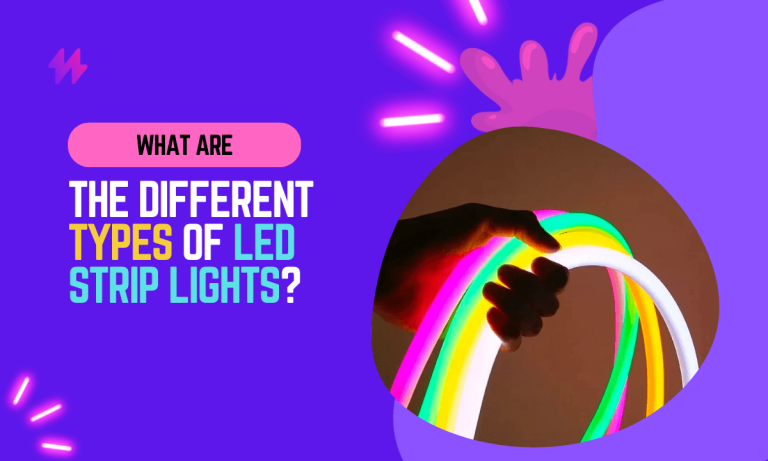3 Easy Methods To Reset LED Lights Without Remote Control
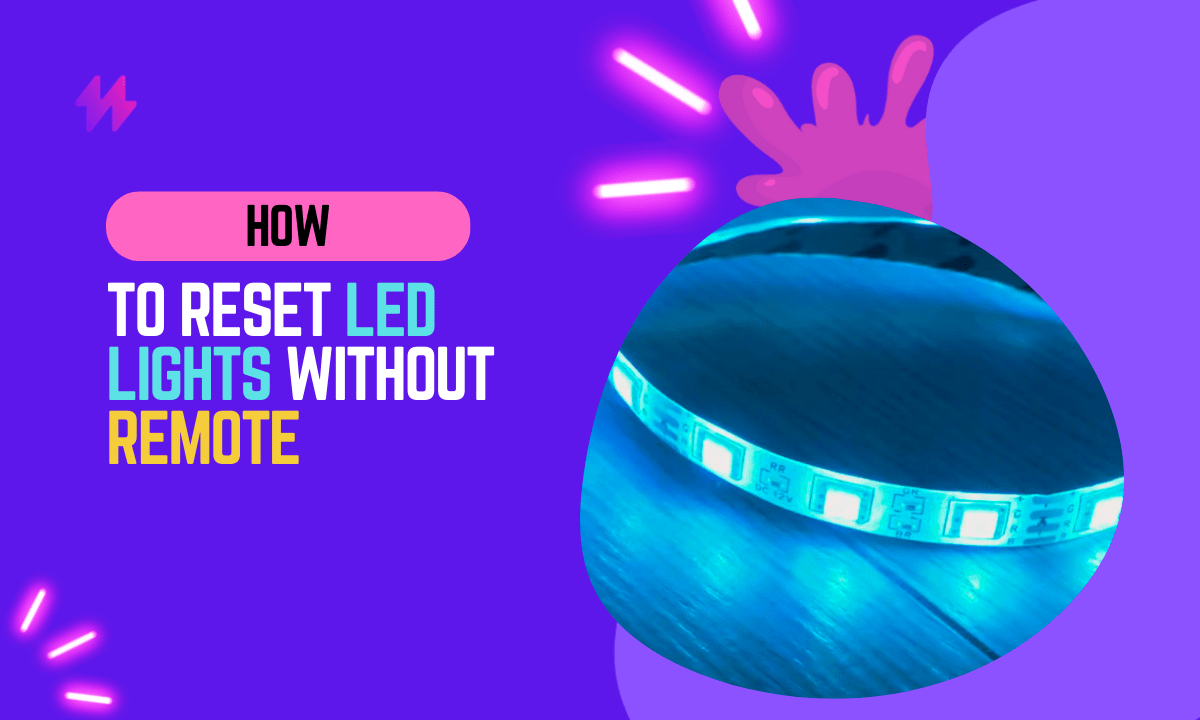
LED lights have gained immense popularity recently due to their energy efficiency, long lifespan, and vibrant illumination. These versatile lighting solutions offer a wide range of functionalities, including the ability to be controlled remotely.
Remote control allows users to effortlessly adjust their LED lights’ brightness, color, and lighting effects with just a button press.
However, what happens when you find yourself in a situation where your LED lights need to be reset, but you can’t locate the remote control? Resetting LED lights without a remote might seem daunting, but fear not!
This blog will guide you through simple and effective methods to reset LED lights without remote.
So, let’s get started and discover the world of LED light reset methods that don’t require a remote!
Did you know that many smart lighting systems can be easily integrated with smart speakers? These systems allow you to control lights using voice control, providing a seamless and modern approach to managing your lighting settings.
The Importance of the LED Light Remote: 3 Easy Methods to Reset LED Lights Without Remote Control
LED lights come with various features that enhance their versatility and functionality. One prominent feature is the remote control capability, which enables users to adjust various lighting parameters, such as brightness levels, color options, and dynamic lighting effects.
With remote control, you can easily create moods and ambiance to suit your preferences or specific occasions.
The remote control is a convenient interface to communicate with and command your LED lights. It typically uses infrared or radio frequency signals to transmit instructions to the LED light source or its associated controller.
This wireless communication allows you to change settings, switch between different modes, or turn the lights on and off without physically interacting with the lights themselves.
Controlling LED lights has become more accessible with the integration of advanced lighting technology, making it easier to achieve the desired lighting effects for any room. Whether you are adjusting brightness settings in your living room lights or setting colored lighting effects in your kitchen lights, the convenience of a remote controller or a smart light switch ensures a one-of-a-kind lighting experience.
Why Resetting LED Lights Is Essential for Optimal Performance
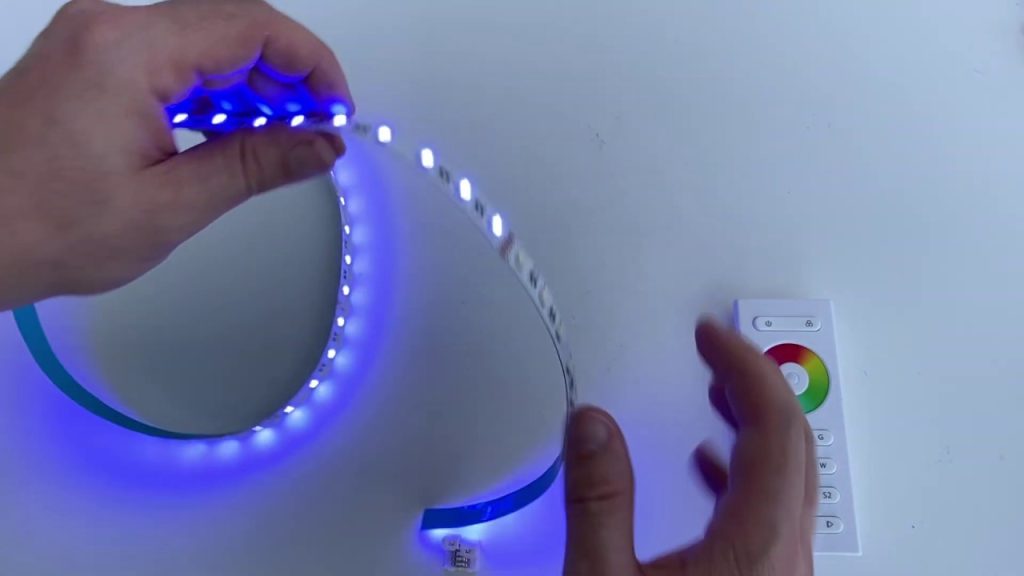
Several common scenarios may prompt you to reset your LED lights, even when you don’t have access to the remote control. Let’s take a closer look at these situations:
There are various situations where your LED bulbs may require resetting, especially when the dedicated remote becomes useless or is not available. Understanding the reset switch location and following the three easy methods to reset LED lights without remote control can help you regain control over your lighting displays and ensure the right lights are functioning as intended.
Troubleshooting Technical Issues with LED Lights
Like any electronic device, LED lights occasionally encounter technical glitches or malfunctions. These issues may manifest as flickering lights, unresponsive controls, or erratic behaviour. Resetting the lights can be a troubleshooting step to address and restore such problems to normal functioning.
When troubleshooting issues with LED lights, knowing the reset steps can save time and frustration. If your light-bulbs become unresponsive due to a defective remote or controller problems, utilizing the 3 easy methods to reset led lights without remote control can quickly bring them back to normal function.
Adjusting Your LED Light Settings and Patterns: A Comprehensive Guide
LED lights often have various pre-programmed lighting patterns, color options, and dynamic effects. Perhaps you want to experiment with different lighting schemes, create a new ambiance, or align the lighting with a specific theme or event. Resetting the LED lights allows you to start afresh and explore different settings without the remote control.
The versatility of LEDs, including led strips and outdoor lights, enhances the experience as you can create stunning displays of light with various colors and brightness levels. If you find your remote useless or face issues with connected switches, utilizing alternative power sources or exploring smart light apps can ensure a quick adjustment to your light-bulbs and help in managing remote changes efficiently.
Addressing Remote Control Loss or Malfunction in LED Lighting
It’s not uncommon for remote controls to get misplaced, damaged, or stop working altogether. In such cases, you may be unable to control your LED lights. However, this setback shouldn’t prevent you from resetting or adjusting your lights. Alternatively, you can reset the LED lights and regain control over their settings.
Finding effective solutions for managing your LED lights can involve checking for burnt-out bulbs or ensuring that no fuses are blown in your control systems. Utilizing a smart switch or wireless remote extenders can enhance the flexibility of your lighting setup, allowing you to easily adjust brightness and change colors as needed through your home wifi network.
Resetting LED Lights Without a Remote: A Comprehensive Guide
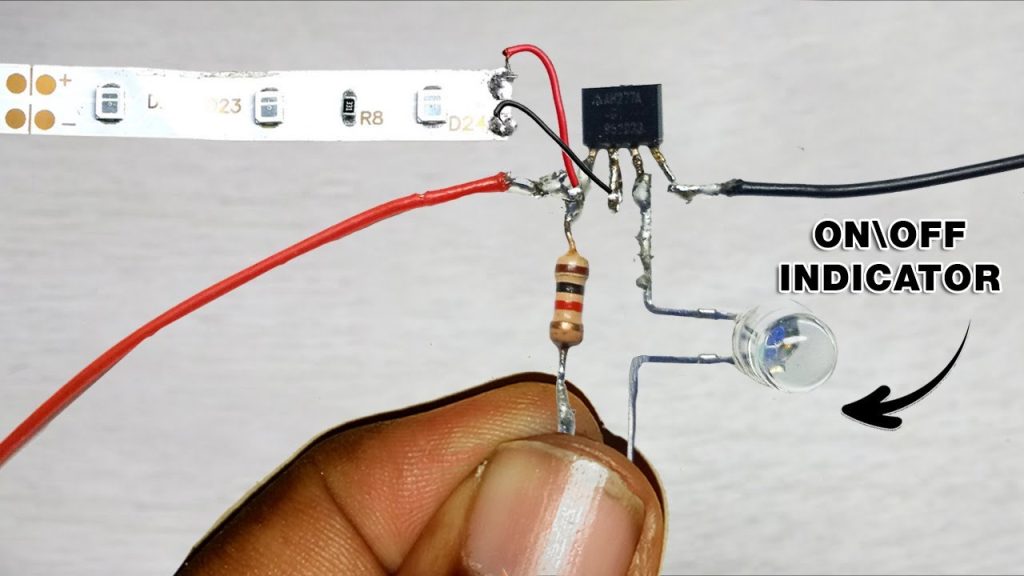
You may need to reset your LED light remote for a few reasons. However, if resetting it doesn’t work, or if you don’t have access to the remote control, there are other things to consider. Let’s explore these situations in more detail.
If your LED lights are unresponsive, it’s important to check whether they are properly plugged in or if the power adapter plugs are functioning correctly. Exploring the resetting option, such as finding the reset symbol on LEDs, can also serve as an easy way to regain control when dealing with malfunctioning remotes or led controllers.
Power Cycling: Essential Method for Resetting LED Lights
One of the simplest and most commonly used methods is power cycling. This involves turning off the power to the LED lights and then turning it back on. Here’s how you can do it:
Power cycling is an effective method for troubleshooting unresponsive LED lights, particularly if the lights have been unplugged. Keep in mind that using infrared remotes or smart switches might also help manage your lighting setup, especially if you’re trying to restore sunset lighting or change led colors.
- Locate the power source or power adapter that supplies electricity to your LED lights.
- Unplug the power source or disconnect the power adapter from the electrical outlet.
- Wait 10-15 seconds to ensure all residual power is discharged.
- Reconnect the power source or plug the power adapter into the electrical outlet.
- Your LED lights should now be reset and ready for use.
Utilizing a Physical Switch: A Guide to Resetting LED Lights
Many LED light strips or controllers have a physical switch integrated into them. This switch lets you control the power supply and manually reset the lights. Here’s how to utilize it:
For those who have experience with unplugged lights, knowing how to use the integrated switch on LED controllers can be a great advantage. Additionally, if you encounter issues with your light-bulbs, consider using remote repeaters to enhance your control over the system in the event of a power shutdown.
- Locate the physical switch on your LED light strip or controller. It is usually a tiny button or toggle switch.
- Turn off the power supply to the LED lights using the physical switch.
- Leave the lights powered off for a few seconds.
- Turn the power back on using the physical switch.
- Your LED lights should reset and resume their default settings.
Resetting LED Lights Using Smartphone Apps: A Comprehensive Guide
If your LED lights are compatible with smartphone apps, you can utilize this convenient method to reset them. Here’s what you need to do:
- Install the appropriate LED light control app on your smartphone. In the app store, you can find these apps for your LED light brand or model.
- Open the app and follow the instructions to connect and pair your smartphone with the LED lights.
- Once connected, navigate to the settings or reset options within the app.
- Locate the reset function and initiate the process per the app’s instructions.
- The LED lights should now be successfully reset.
Also read How To Connect Daybetter LED Lights to SmartPhone App.
Many LED systems offer compatibility with smartphone apps, enhancing user convenience when managing light-bulbs. This functionality allows users to reset their LED lights and incorporate additional features to create a more personalized lighting experience, especially with popular brands like ledyi.
Essential Troubleshooting Tips for LED Light Issues
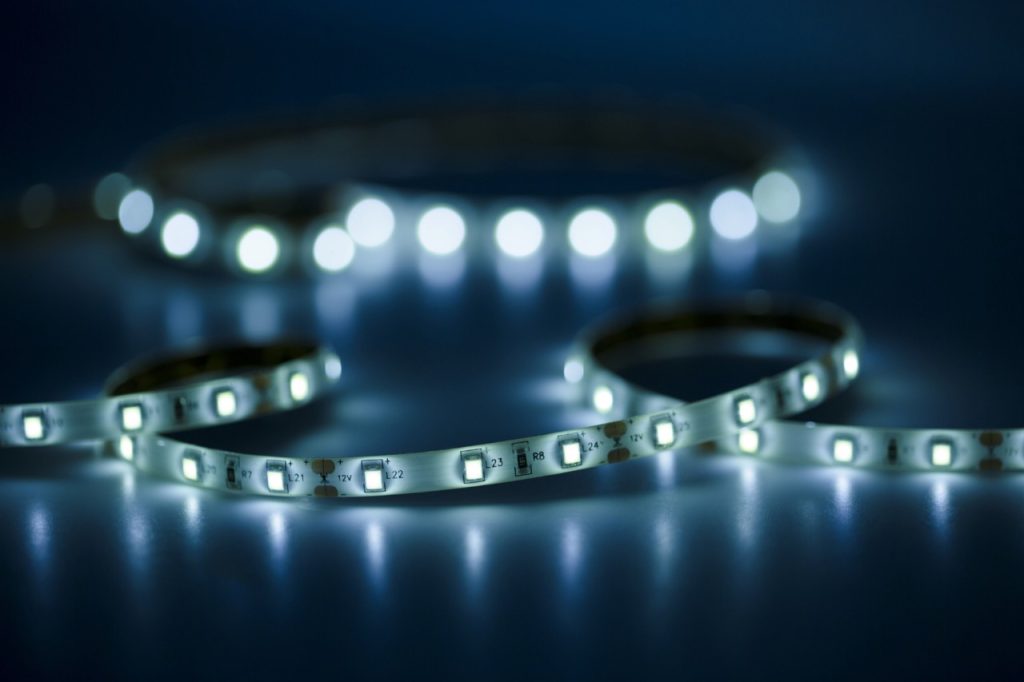
In addition to the methods mentioned earlier, here are some additional tips and troubleshooting techniques to assist you in resetting your LED lights without a remote control:
To further enhance your control over light-bulbs and ensure they perform optimally, consider checking the compatibility of your lighting system with various smart home devices. Adopting advanced troubleshooting techniques can not only streamline your LED management but also improve the overall lighting experience in your home, including the use of light-bulbs and smart technologies to create unique atmospheres.
Power Supply and Connections: Essential Troubleshooting Tips for LED Lights
Ensure that the power supply to your LED lights is stable and secure. Check all the connections, including the power adapter, cables, and connectors, to ensure they are correctly plugged in. Loose or faulty connections can cause issues with the lights’ functionality. If necessary, reconnect or replace any faulty components.
To optimize the experience with your light-bulbs, regular maintenance check-ups are critical to prevent potential issues. Additionally, exploring new efficient technologies can lead to remarkable enhancements in your lighting setup, making it easier to manage your light-bulbs effectively.
Check Wi-Fi or Bluetooth Connectivity for LED Lights Troubleshooting
If you’re using LED lights controlled via Wi-Fi or Bluetooth, ensure that your smartphone or the device you’re using to control the lights is connected to the same network or has a stable Bluetooth connection. Unstable or disconnected connections can hinder the reset process. Troubleshoot any connectivity issues by restarting your network router or enabling/disabling Bluetooth on your device.
Maintaining a stable connection is crucial for successful control over your light-bulbs and ensuring that all advanced features function smoothly. Regularly updating your smart device can also contribute to improved management of your light-bulbs, enhancing the overall experience.
Resetting the LED Light Controller or Hub: A Comprehensive Guide
Some LED light systems may have a separate controller or hub communicating with the lights. If you’re facing persistent issues with the lights, you can try resetting the controller or hub itself. Refer to the manufacturer’s instructions to find the specific reset procedure for your device. Once the controller or hub is reset, reconfigure the settings and reconnect the lights as required.
To ensure the functionality of your light-bulbs, it’s essential to follow the manufacturer’s guidelines when troubleshooting any connectivity issues. Using a systematic approach to reset your light-bulbs can greatly enhance your overall lighting management experience.
Seek Expert Assistance for LED Light Issues
If you’ve exhausted all the troubleshooting steps and still can’t reset your LED lights, it may be time to seek assistance from a professional. Contact the manufacturer’s customer support or consult an electrician specializing in LED lighting systems. They will have the expertise to diagnose and resolve any complex issues you may be experiencing.
Also read: How to Connect LED Lights To Your Smartphone
If you’re still facing challenges with unresponsive light-bulbs after following all troubleshooting methods, seeking expert help can be a wise decision. Professionals can offer tailored advice and solutions that address specific issues with your lighting system, ensuring your light-bulbs are functioning as intended.
Frequently Asked Questions: Troubleshooting LED Light Issues
Q: How do you manually reset LED lights?
A: To manually reset LED lights, you can disconnect the power source, wait for a few seconds, and then reconnect it.
Q: How do I get my LED lights to work without a remote?
A: If your LED lights don’t have a remote, you can use the control buttons on the LED controller itself to change settings and functions.
Q: Do LED lights have reset buttons?
A: Not all LED lights have reset buttons. However, some LED light systems may include a reset button on the controller or the power supply.
Q: Why are my LED strip lights not responding to my remote?
A: LED strip lights may not respond to the remote for various reasons, such as a low battery, signal interference, or a faulty remote. Try replacing the batteries or ensuring a clear line of sight between the remote and the receiver.
Q: Why are my LED lights stuck on one color?
A: LED lights can get stuck on one color if there is a problem with the remote control, the controller, or the wiring. Troubleshoot by checking the remote batteries, reconnecting the lights, or resetting the controller.
Q: How do you reset light strips?
A: To reset light strips, unplug the power source, wait for a few seconds, and then plug it back in. Alternatively, some light strips may have a reset button that you can press. Refer to the manufacturer’s instructions for specific reset procedures.
To manually reset your LED light-bulbs, start by disconnecting the power source for a few seconds before plugging it back in. If you are facing issues with your LED light-bulbs not responding, it’s advisable to check for any possible connection interruptions and troubleshoot as needed.
Conclusion: Final Insights on LED Light Remotes and Their Importance
In conclusion, resetting LED lights without a remote control is a straightforward process that can be essential for troubleshooting issues or reverting the lights to their original settings. The three methods detailed—using the power switch cycling technique, utilizing the built-in reset button, and disconnecting the lights from their power source—are each effective depending on the specific setup and model of LED lighting you have. Power cycling, the most commonly used method, involves turning the lights off and on at specific intervals to trigger a reset. This method is particularly useful as it does not require any additional tools or extensive technical knowledge, making it accessible for everyday users.
Furthermore, understanding which method to apply and when can save both time and effort. For instance, if your LED system includes a physical reset button, this can provide a quick and reliable way to restore settings without having to manipulate the power supply. On the other hand, disconnecting the lights from power is often seen as a last resort but can be the most effective in completely clearing all settings and resolving any persistent operational issues. Whatever method you choose, ensure that you follow the steps carefully to avoid damaging the LED lights. Regular maintenance and familiarity with these resetting techniques can enhance the longevity and performance of your LED lighting, ensuring they continue to function efficiently and effectively in your home or office environment.
3 Easy Methods To Reset LED Lights Without Remote Control | Understanding LED Light Technology
Understanding LED light technology is crucial for effective troubleshooting. LED light-bulbs are designed to be energy-efficient and long-lasting, but sometimes they may require resetting. This can happen due to a range of issues including power surges or simple malfunctions. Knowing 3 Easy Methods To Reset LED Lights Without Remote Control can empower users to regain control over their lighting without the hassle of searching for a remote. These methods often involve manipulating the power source or using physical switches, making it accessible for everyone to restore functionality to their LED light-bulbs quickly and easily.
3 Easy Methods To Reset LED Lights Without Remote Control | How LED Lights Function Internally
LED lights operate using a semiconductor that emits light when an electric current passes through it. This technology is quite different from traditional incandescent light-bulbs, which rely on heating a filament to produce light. Because LED lights are energy efficient, they generate less heat and have a longer lifespan. Understanding the internal function of these lights can provide insight into why certain issues may arise, prompting users to seek 3 Easy Methods To Reset LED Lights Without Remote Control for troubleshooting.
The circuitry within LED light-bulbs plays a crucial role in their operation. This circuitry ensures that electrical energy is converted to light efficiently. However, like any electronic device, LED lights can experience glitches or malfunctions. Knowing 3 Easy Methods To Reset LED Lights Without Remote Control allows users to properly address these issues and restore functionality without needing a remote. The ability to reset lights can save time and effort, enhancing the overall user experience.
The Role of Remote Controls in LED Lighting
Remote controls play a significant role in the convenience of LED lighting systems. They enable users to adjust brightness, change colors, and power light-bulbs on and off without the need for physical interaction with the fixtures. This ease of use promotes energy efficiency and enhances the overall user experience. While many people rely on these remotes, there are situations where knowing the 3 Easy Methods To Reset LED Lights Without Remote Control becomes essential, especially when a remote fails or is misplaced.
The reliance on remote controls has made LED lights accessible and adjustable at the touch of a button. However, users may occasionally face issues that require a reset of the system. Understanding the 3 Easy Methods To Reset LED Lights Without Remote Control can empower users to regain control over their lighting setups. Whether dealing with malfunctioning light-bulbs or wanting to reconfigure settings, these methods offer practical solutions to maintain desired lighting conditions.

